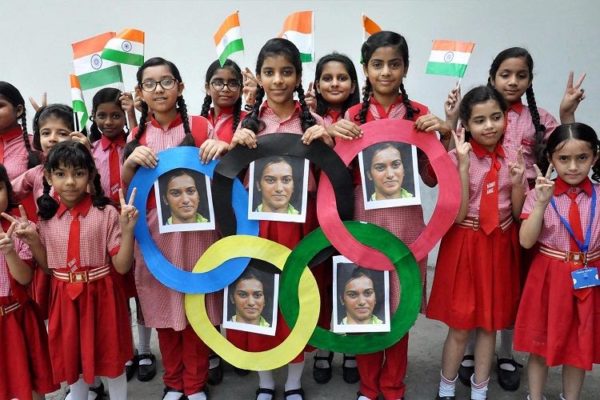The performance of our female athletes at the 2016 Olympics at Rio has made the country sit up and watch like it normally does only for an India Vs Pakistan encounter. In cricket.
The photographs of crowds across the country cheering the matches are unprecedented. Amidst all the euphoria, social media has erupted with memes and status messages on “Beti bachao”, with people pointing out that without the lion-hearted performances of these women, India might have come back “khaali haath” – and that this is why we need to save the girl child.
Certainly, it’s wonderful to see strong women role models breaking stereotypes and glass ceilings to claw their way up the ladder, whichever field it might be. However, it’s troubling that we need to measure the girl child’s right to life with the amount of success she will have – success that we recognize and applaud as “success”.
Female feticide and infanticide are rampant in urban as well as rural areas. Sakshi Malik comes from Haryana, a state that has the lowest sex ratio in the country. As does Saina Nehwal who gave us a medal in badminton at the Olympics before Sindhu did. Saina has earlier said that her grandmother did not come to visit her when she was born because of her gender. It is indeed remarkable that these women, who come from a society so entrenched in patriarchy, have managed to beat the odds and stay on top.
However, they are exceptions and we need to remember that.
Even if a Sakshi or a Saina had done absolutely nothing that made it to the headlines but had gone on to lead perfectly ordinary, innocuous lives, they deserve the right to live. The girl child does not have to prove her “worth” for her to be allowed to live. She does not have to grow up to a bride so a boy somewhere can get married or perform a highly dangerous Produnova for us to recognize that she’s human and that it is simply wrong to murder her.
It’s also interesting to see when, as a people, we take pride in our women. It routinely happens when they are seen to cross traditional gender roles. That is, when women do things that are generally seen as “masculine”. Women in the army leads to chest-swelling, a woman badminton player’s aggressive rally inspires us, a woman wrestler’s muscular frame makes us take pride in the female body, a woman gymnast’s courage to flirt with death gives us goose-bumps.
Our pride comes from a feeling that these women have done it “despite being a woman”.
Constructed femininity, in the meantime, continues to be applauded only in the context of “sacrifice” and “martyrdom”. Otherwise, it is shoved to the realm of insults and derision. Qualities that are traditionally associated with the feminine in the gender spectrum, like softness, gentleness, or passivity are not considered aspirational because of how skewed the power equation between traditionally “masculine” and “feminine” values is in a patriarchal society. So while we admire the guts of a Nirbhaya who fought back, we will give the policemen on Raisina Hill bangles as an “insult”.
Surely, it helps to have a Sakshi and a Saina in a society where women are not valued. It is a reminder to all of us of the vastness of human potential. And we must recognize and acknowledge that. But let’s not assume that people will stop murdering baby girls because they foresee them winning medals for the country – female feticide and infanticide are consequences of a patriarchal culture that devalues femininity in favour of masculinity and all of us participate in creating and sustaining it.
Just as it is absurd to expect every woman to learn Taekwondo to “prevent” rape while we do very little to beat down rape culture, it is simplistic to argue that girls must be allowed to live because they will make us “proud” in a way that we currently understand. Girls don’t have to prove themselves for us to stop their murder. They have a right to be here because they’re human. And that’s a good enough reason.



Leave a reply